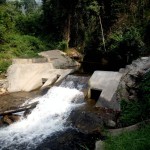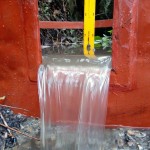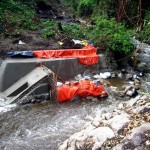Introduction
KARUDEC Hydro Power Limited (KHPL) is in the process of developing a micro-hydropower scheme of 0.4MW in Kasese on River Rwembya to provide a reliable power source to Kagando Hospital. The surplus will be sold to the national grid. It is government policy and requirement under the National Environment Cap 153 that a hydropower project must be subjected to Environmental Social Impact Assessment (ESIA) in order to identify any impacts and mitigate/minimize negative impacts or enhance positive impacts.
KARUDEC Hydro Power Limited (KHPL) is a private company, limited by guarantee based in Kagando, Kasese, Uganda at Kagando Rural Development Center (KARUDEC). KHPL is responsible for generation and management of electricity for KARUDEC and its sub-ordinate institutions (Kagando Hospital, Kagando Primary and Nursery School, Kagando School of Nursing and Midwifery, Kagando School of Medical Laboratory and Theater Technology and Kagando Hospital Farm).
To archive its objectives, KHPL is going to construct and will operate a small hydro power scheme at the development center. This development will pose potential alterations to the community sectors (social, economic, health and environmental) some of which are highlighted in this report.
Christian Engineers in Development (CED) are the owner’s engineers for this project. They provide all the necessary technical assistance and are in charge of producing the outline design and the documents needed by KHPL to attain consents and permits. However, there is some third party specialist work that CED cannot do in the project, such as Environmental Impact Assessment, Sediment Analysis, Seismic Surveys, Geotechnical surveys among other specialist surveys.
Latest Articles
 KAGANDO RURAL DEVELOPMENT CENTER (KARUDEC) CELEBRATES THE INTERNATIONAL PREMATURE DAY ON SAT 13TH DEC, 2025
KAGANDO RURAL DEVELOPMENT CENTER (KARUDEC) CELEBRATES THE INTERNATIONAL PREMATURE DAY ON SAT 13TH DEC, 2025 KARUDEC DONOR GRATITUDE MESSAGE
KARUDEC DONOR GRATITUDE MESSAGE EDEN GUEST HOUSE – KAGANDO, KASESE, WESTERN UGANDA
EDEN GUEST HOUSE – KAGANDO, KASESE, WESTERN UGANDA International Nurses’ day Celebrations June, 2025
International Nurses’ day Celebrations June, 2025- (no title) Post 3634
 Uganda Christian University – Kagando University College
Uganda Christian University – Kagando University College THE RT. REV. BISHOP NASON BALUKU VISITED KARUDEC ON THURSDAY, 30th MAY, 2024
THE RT. REV. BISHOP NASON BALUKU VISITED KARUDEC ON THURSDAY, 30th MAY, 2024












